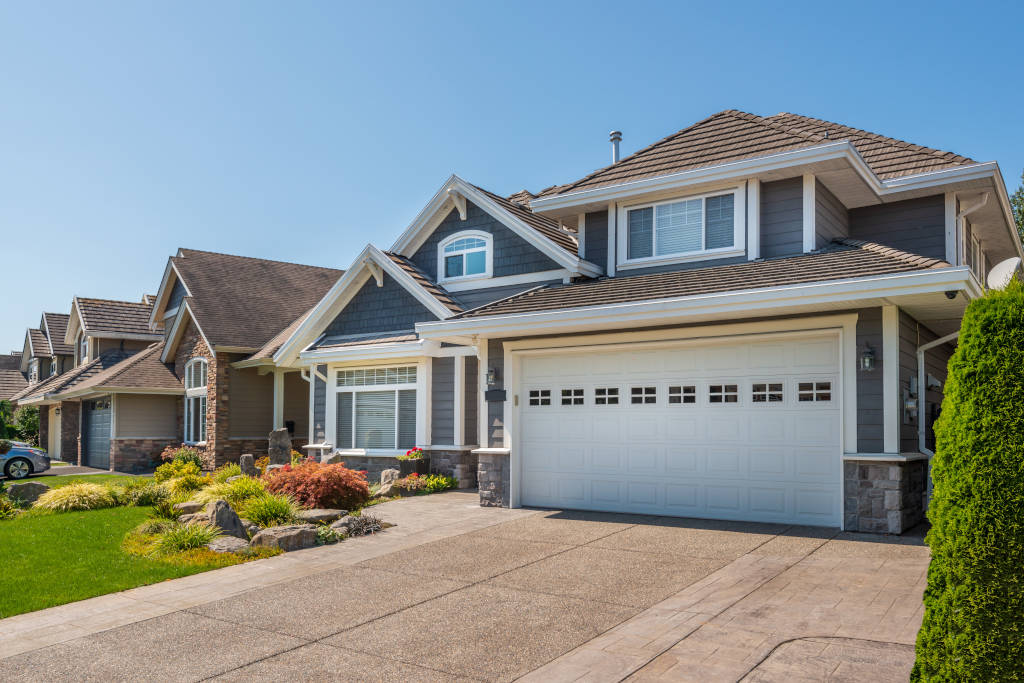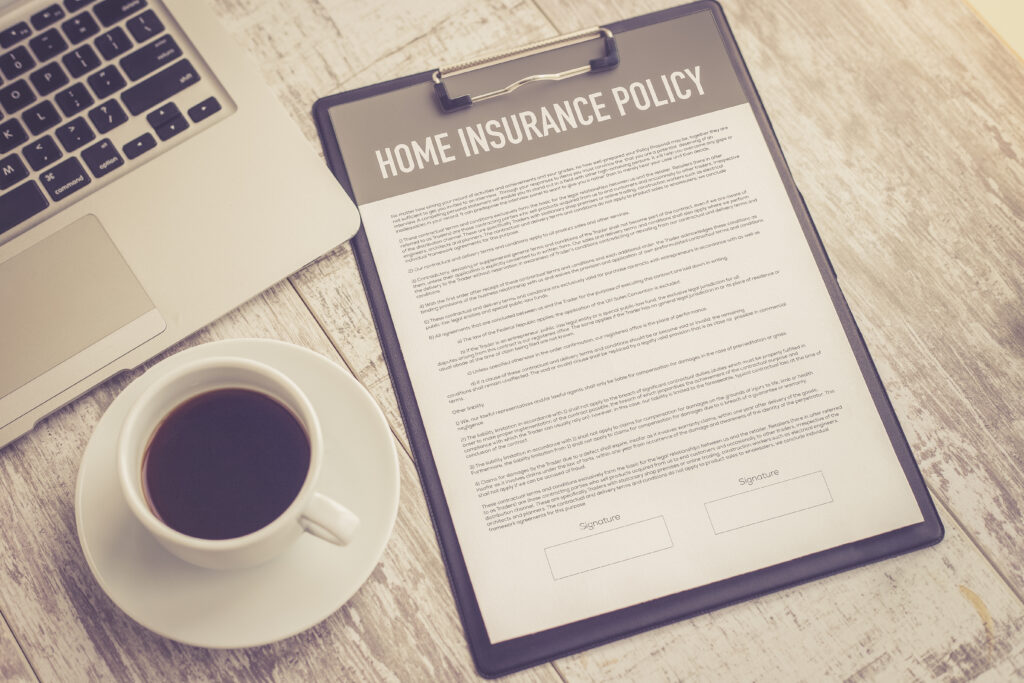A homeowners insurance policy helps protect your house from expensive damages and liabilities. It’s a must-have for anyone that owns property. Banks might even require one if you have a mortgage. Without it, you’ll likely end up paying for any damages out of pocket.
Owning a house is an exciting milestone in a person’s life. But it also brings a lot of responsibility with it. Disaster could strike at any moment. A fire, theft, or even an injury on your property are some examples of things your home is at risk from daily.
This article will help you get a good grasp of home insurance. You’ll learn about whether or not you need it. We’ll also tell you what it does and doesn’t cover, including a breakdown of the various types of coverage. Finally, we’ll look at how much a homeowners policy can cost.
Homeowners Insurance Requirements
If you own a house, homeowners insurance is essential. But is it a requirement? As it turns out, no state requires it. In theory, it should be up to you.
However, banks will most likely require homeowners if you’re taking out a mortgage. Lenders can legally require you to carry a policy if you take out a loan so they can protect their assets. It’s similar to when you finance a car, and the dealer requires you to fully insure it.
Owning your house outright is the only way to avoid buying a home insurance policy. Once you do, banks have no say in the matter. But even if it isn’t required, it’s wise to protect your investment. Random disasters could plunge you into financial ruin. Having coverage in place can give you peace of mind and save you thousands of dollars.
What Homeowners Insurance Covers
A home insurance policy protects you from both damage to the physical structure of your house and injuries that occur on your property. Homeowners usually typically breaks down into four main types of coverage:
- Dwelling coverage. Pays for any damages to structures on your property. This is usually your home and possibly other attached structures.
- Liability protection. Protects you from having to pay for damages related to injuries or other damages that happen on your property. This includes damages that people in your family (including pets!) cause to other people’s property. It also covers you from lawsuits that people may file due to bodily injury or property damage.
- Personal belongings coverage. This pays to replace your personal belongings in the event of theft, fires, storms, etc. This includes furniture, clothes, and any other belongings in your house.
- Additional living expenses. This covers the costs of living elsewhere if you’re no longer able to live in your home due to excessive damages. Costs of living include hotels, food, and any other expenses you incur. Keep in mind that this only pays for any expenses that are more than your normal cost of living.
What It Doesn’t Cover
Homeowners protects you from many common perils that can damage or destroy your house. Even so, there are some situations where your policy affords no protection. Some natural disaster aren’t covered by a standard home insurance policy. For instance, you won’t find flood or earthquake coverage in these policies. Be sure to ask your insurer about what your policy includes.
Your insurance also won’t pay to fix any damages that you cause to your house. This includes any poor maintenance on your part. Your insurer will not help you in this case.
Any cars on the property also won’t be part of your homeowners policy. Your auto insurance should be able to take care of any damages to your car. Comprehensive protects your car from natural disasters and theft. Not having it means you’ll have to pay for any random damages yourself.
While it’s true that your home insurance policy covers personal property, there are limits to how much loss you can claim. If you collect art and have a decent collection, the value could exceed your homeowners coverage. Luckily, insurers allow customers to add riders or endorsements that protect specific items from loss.
The 16 Named Perils in Insurance
When you buy a homeowners policy, you’ll have the option to select one of many types of coverage. Each type of policy has its benefits. One of the main benefits is the number of specific or named “perils” it protects you from.
There are the 16 named perils that your home insurance covers, according to the Insurance Information Institute (III):
- Fire or lightning strikes
- Wind or hailstorms
- Explosions
- Riots or civil disturbances
- Damage from a vehicle
- Damage from an aircraft
- Smoke
- Vandalism
- Theft
- Volcanic eruption
- Falling objects
- Damage from ice or snow weight
- Water damage from a discharge of faulty plumbing, sprinkler systems, heat or air conditioning, or appliances (such as a dishwasher or refrigerator)
- Cracking, bulging, or ripping apart of a faulty air conditioning, hot water, or fire protection system
- Freezing of a heating, plumbing, or any other water system
- Accidental damage due to an artificial electrical current
You’ll usually find each type of policy with a number next to it. For instance, HO-1 is the first type, and so on. As the numbers get higher, so do the benefits.
Type of Homeowners Insurance
Home insurance is divided into eight distinct categories, each covering property in different ownership situations and dwelling classifications. Here are the types of homeowners policies you’ll find:
- HO-1. The most basic form of homeowners insurance. Doesn’t usually include any liability coverage. It protects you from up to 10 perils. You may not be able to find this type of policy from many insurers.
- HO-2. Grants you limited coverage. Many insurers refer to it as “broad form” because it covers more perils than HO-1. This is still a very limited option.
- HO-3. This is the most common and popular form of home insurance. It covers you from any peril, except those that your insurer specifically notes. Includes all of the basic coverages.
- HO-4. For renters only. It protects their personal belongings from all 16 perils. But it doesn’t cover any damage to the structure. The landlord’s insurance would pay for these repairs.
- HO-5. The most premium and comprehensive homeowners policy. Covers all 16 perils. It also adds extra protection for more expensive dwellings and personal property. This type of coverage may only be available for newer construction Be sure to ask your agent about this policy’s availability if you want to buy it.
- HO-6. This provides protection for condo owners. It includes a condo’s walls, floors, and ceilings rather than the whole structure. You may see insurers call it the “walls-in” coverage.
- HO-7. This type of policy is for mobile homes. It protects your personal belongings and the building’s physical structure. In general, it covers about the same number of perils as HO-2. Though, this may vary depending on your insurer. Your provider should be able to help you if you’re wondering about the types of perils covered by an HO-7.
- HO-8. Protects houses that are 40 years or older. Typically, HO-8 offers about the same amount of coverage as HO-1 when it comes to perils. This makes HO-8 a very limited option.
Replacement Cost vs. Actual Cash Value (ACV)
Your insurer will reimburse you if your house sustains any damage covered by your policy. Depending on your coverage options, they’ll reimburse you using either replacement cost or the actual cash value. Each one will help fix your house, but they’re each a little different. Here’s how each works:
Replacement Cost
Insurers use replacement cost to help replace and repair any damages to your property. The key difference from actual cash value (ACV) is that this doesn’t deduct the depreciation of the asset (your house). Replacement cost often includes both dwelling and personal belongings coverage.
It’s critical to know how much it’ll cost to replace your home and personal belongings. Otherwise, you could run into trouble if you’re trying to repair and replace your property. It’s also a good idea to keep an inventory of your personal belongings. This way, you’ll have a better idea of how much it’ll cost to replace your items.
Actual Cash Value (ACV)
With actual cash value or ACV, your insurer will replace your asset and belongings after deducting any depreciation they’ve experienced. Depreciation refers to “wear and tear” that reduces an item or asset’s value over time. Keep in mind that this only includes damages from the perils named by your policy.
Unlike replacement cost, actual cash value may not pay you the full amount that you need to repair or replace your items. This is because your provider will factor in any loss of value.
Homeowners Endorsements and Riders
Another key part of homeowners insurance is endorsements, which are sometimes referred to as policy riders. These are extra coverage that your insurer makes available to you. Any damages that occur to your house or belongings may cost more than your limits. These help reduce the chance of paying to replace valuables out-of-pocket.
Types of Endorsements
There isn’t just a one size fits all endorsement that you can get. Insurance companies offer several types of endorsements to fit your needs. Common types of endorsements include:
- Limited home business coverage. Offers the same liability protection for your small business as you’d have for your house.
- Scheduled personal property. Extra coverage for expensive items in your possession i.e., jewelry, collectibles, etc.
- Identity theft protection. Protects you from identity theft attempts and helps you recover afterward.
- Sewer backup and pump overflow. Covers any damages that a pump or sewer overflow causes to your house.
How Much Homeowners Insurance Costs
The price of homeowners insurance varies by person. Insurers consider a few different factors when they’re setting your rates. Typically, they look at factors that tell them whether or not you’re a risk to file future claims.
How many claims you’ve filed in the past plays a huge role in your current and future rates. They might also look at your credit score and insurance history. Where you live can also be key. Crime rates, natural disasters, and other risks can cause your rates to rise. As will the number of claims that people are filing in the area.
To best understand how much you’ll pay, it’s a good idea to compare homeowners insurance quotes. This way, you can get the best deal by finding out what each company would charge you. Doing so could save you money on coverage for your house.
Frequently Asked Questions
What’s the best type of homeowners policy?
The most common home insurance policy is HO-3. This policy protects you from all 16 perils or disasters that could damage your house. It also typically includes all four of the basic homeowners coverage types:
- Liability protection
- Dwelling coverage
- Personal belongings coverage
- Additional living expenses
But the type of policy that offers you the most protection is HO-5. This is typically a good fit for those who have expensive belongings or a new home. It covers you from all named perils as well.
Do I need homeowners coverage?
If you financed your house, as most people do, your mortgage provider will require that you protect their property with a homeowners policy. That’s because you don’t truly own anything until the loan is paid off. As long as you’re making payments, the bank owns it.
Once you’ve signed the mortgage release or satisfaction documents, you will own the house free and clear. At this point it’s still a good idea to carry a home insurance policy even if it isn’t a requirement.
Does home insurance cover flood damage?
In general, flood damage is not covered by homeowners. This is a type of coverage that you would have to add separately. Depending on where you live, it might be a good idea to consider adding it. You’ll have to assess your area’s risk for floods to decide if you need to add flood to your home insurance policy.


